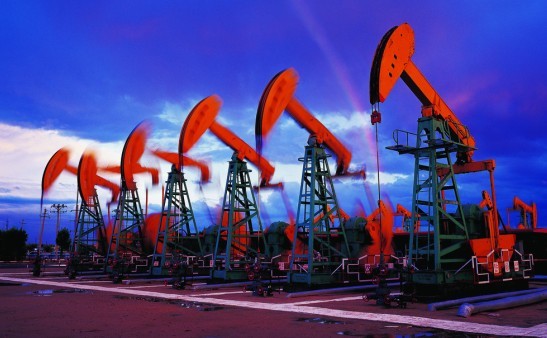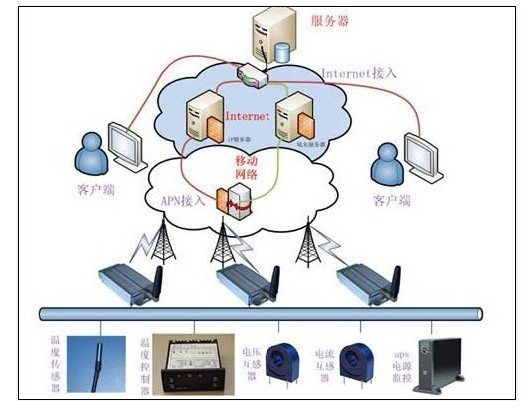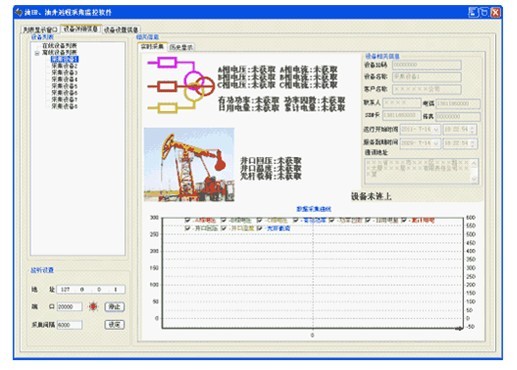Case background
Oil and gas resources are abundant, gas fields are widely distributed, and are often far away from cities and towns and densely populated areas; In the same gas field, the gas wells are very scattered. Due to their different geographical locations, different production horizons, and different natural gas components and impurities. Generally speaking, in addition to a set of automatic control instrument equipment suitable for the process equipment in the gathering and transportation process to detect and control the separation, metering, heat exchange, pressure regulation and other processes, there is also a need for a comprehensive dispatching management system suitable for production; Therefore, it is necessary to establish a unified and modern production management network.

Oil well remote monitoring system
With the rapid development of network information technology, it has become an inevitable trend to transform or abandon the traditional system control mode with the goal of building digital oil. The oilfield information construction mainly includes four parts: oil well remote measurement and control terminal RTU, distribution line automation system, oil pipeline leakage monitoring and automatic monitoring of gathering and transmission station library. Its purpose is to use the on-site monitoring system and wireless data transmission module DTU, Realize the automatic collection of data source, provide an open data platform for the application of management departments at all levels with the help of the existing network resources of the oilfield, enable the production and management personnel to control and master the production dynamics in time, and make statistics, analysis and optimization of the obtained real-time data, so as to provide an important basis for ensuring the normal operation of production equipment and reducing production costs.
programme
The oil well remote monitoring system mainly transmits the detected oil well status to the real-time database server in the operation area through wireless mode through the real-time detection of wellhead parameters and the communication mode of polling and response. In C / s or B / S mode, each department of production management can grasp the oil well working status in time, shorten the oil well fault processing time, improve the well opening time rate, increase the crude oil production and improve the work efficiency.
The wellhead controller collects the indicator diagram, electric quantity, back pressure, temperature and other parameters of the oil well, and connects them to the communication machine and real-time database server in the operation area in the form of CDMA / GPRS special line or data transmission radio interface (RS232). The computer of the factory and mining team can access the real-time database in the form of browser or client. Moreover, the wellhead controller can collect and calculate the electric quantity parameters of the motor in real time, and provide the required data for the 6kV distribution line automation system. The distribution line automation system is composed of CDMA / GPRS network to realize the real-time monitoring and management of the operation status of the distribution line.
The automation system of gathering and transportation station and the leakage detection system of oil pipeline are relatively independent systems. The production data collected by the system are uploaded to the real-time database of the operation area through the LAN to realize online data sharing. Through B / S mode, managers can browse and query the real-time data of the whole operation area and understand the on-site production situation in time. The production data can also be counted and analyzed through C / S mode. In order to ensure the clock consistency of the system, the system is equipped with a special GPS clock to synchronize the system clock of the whole network, including timing and remote time synchronization.
The system block diagram is as follows:

According to the regional characteristics of oil well distribution and the development level of wireless communication technology, CDMA / GPRS or data transmission radio communication mode is considered for the oil well remote monitoring system. The system is mainly composed of sensor, wellhead controller Su, CDMA / GPRS (data transmission radio) wireless data transmission module DTU (GPRS DTU), operation area communicator, real-time database server, web server, monitoring browsing terminal, etc.
Oil well working state sensors mainly include temperature sensor, pressure sensor, motor current and voltage sensor, pumping unit load, displacement sensor and transformer primary side current sensor. They convert the working state of oil well into corresponding voltage or current value and send it to wellhead controller su. Then it is connected to the communication machine in the operation area through CDMA / GPRS network or data transmission radio. The data communication machine collects the data of wellhead controller by polling. After analysis and processing, the data is entered into the real-time database in the operation area. The computer of the factory and mining team can access the real-time database in C / s or B / S mode according to different permissions.
system function
1. Data acquisition function
Data timing acquisition: it can collect all kinds of telemetry, remote signaling, electrical degree and other types of measurement data that can be transmitted to the master station through channels. The system calls the oil well terminal data regularly, and the call cycle can be set in minutes according to the power diagram, current diagram and other quantities, with a minimum of 1 minute and a maximum of 255 minutes; On demand data acquisition: the user terminal in the operation area can request to call the data of one or more wells at any time;
Communication control function: start / stop the data acquisition of oil well terminal, switch the channel used by the terminal, etc;
Channel quality monitoring and fault diagnosis, communication flow calculation;
GPS time synchronization: access the GPS clock signal, regularly unify the clock of the whole system, and send the time synchronization command to each oil well terminal;
Multiple protocols and communication channels can be supported;
Add or delete the oil well terminal, and modify the terminal communication parameters, such as address, communication protocol, data call cycle, etc; Modify the oil well terminal parameters, such as various alarm limits, pumping unit stroke, stroke times, sensor range and other parameters, and send the necessary parameters to the oil well terminal;
2. Data processing function
Event alarm processing function: the system can set the alarm upper and lower limits, effective upper and lower limits respectively for analog quantity. When the data exceeds the limit, an alarm record can be generated. It can define the sound effect of alarm and give voice alarm prompt;
Event recording: the system records all user operations, communication events and terminal alarms;
The data saving cycle can be set to save in case of change, 10 minutes, 30 minutes and 60 minutes according to different data types (the saving cycle shall be greater than or equal to the collection cycle);
Rights management. All system operations have authorization control;
3. Human machine interface function
Interface cyclic display: the authorized user can select the oil well to make the basic information interface automatically cyclic display. The display time can be set in seconds between 5 seconds and 30 seconds;
When the alarm occurs, the alarm screen can be automatically pushed out, accompanied by sound or voice alarm;
Display oil well information in combination with geographical location map, such as well opening / closing, basic operation data, etc;
Display the operation information of power lines related to oil wells in combination with the geographical location map, such as whether there is a power outage;
Generate the time curve of each acquisition parameter;
Display indicator diagram: superposition and parallel comparison of indicator diagrams;
Calculation function: support common functions;
Comprehensive query of historical data and report generation;
Remote well start / stop (reserved function).
The software interface is as follows:

4. System maintenance function
Provide handheld terminals for oil well terminal maintenance personnel to facilitate on-site maintenance, and receive on-site alarm information in case of failure of bureau information network;
5. Report function
You can customize the report format and generate various reports.
conclusion
As an application system based on GPRS / CDMA Technology in oil wells, the completion and substantive application of the system greatly saves the expenses of various production costs and improves the work efficiency. The popularization of this technology provides a good start for oil well data acquisition.

 Manager Wang
Manager Wang
 OfficialAccounts
OfficialAccounts